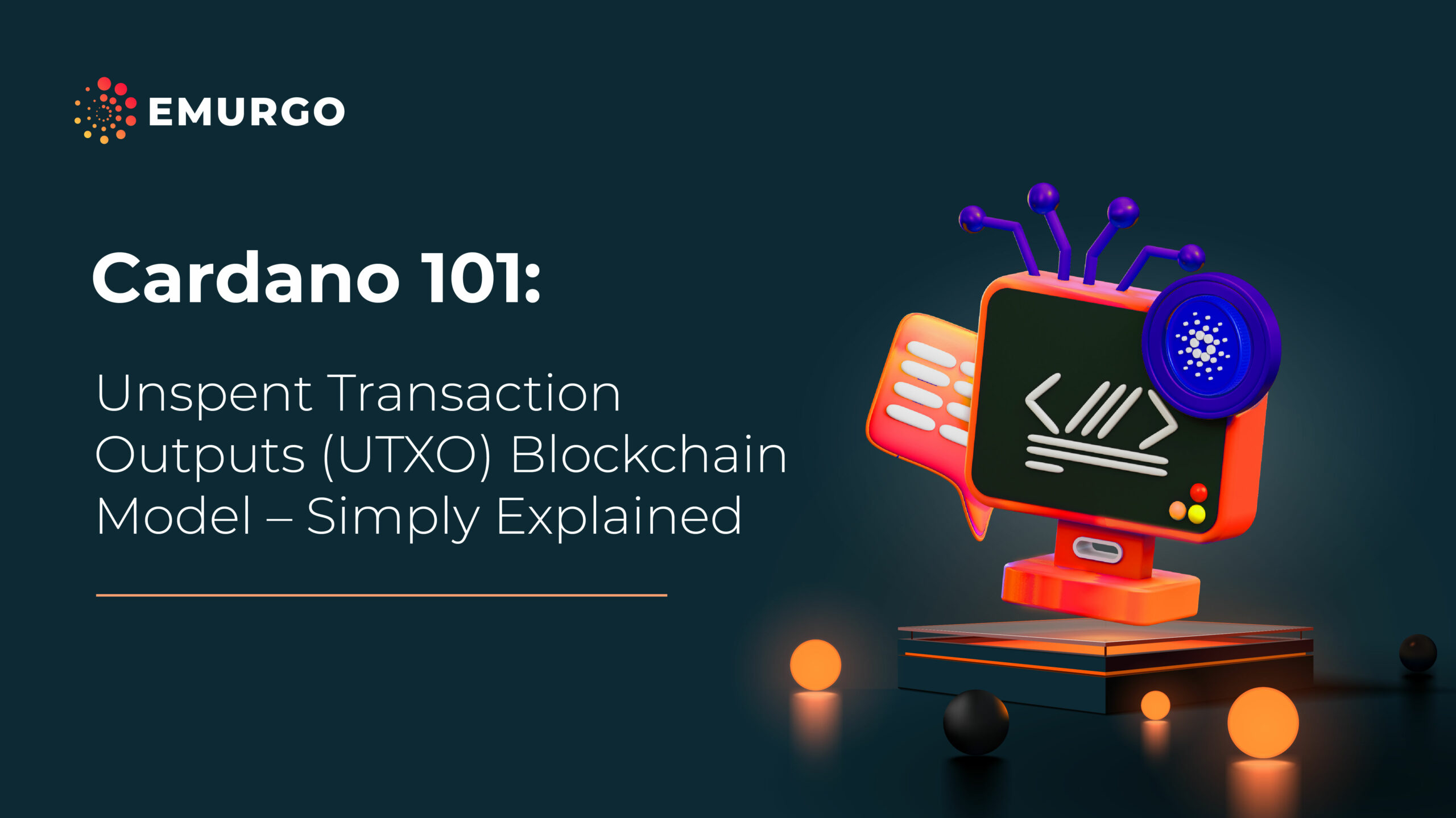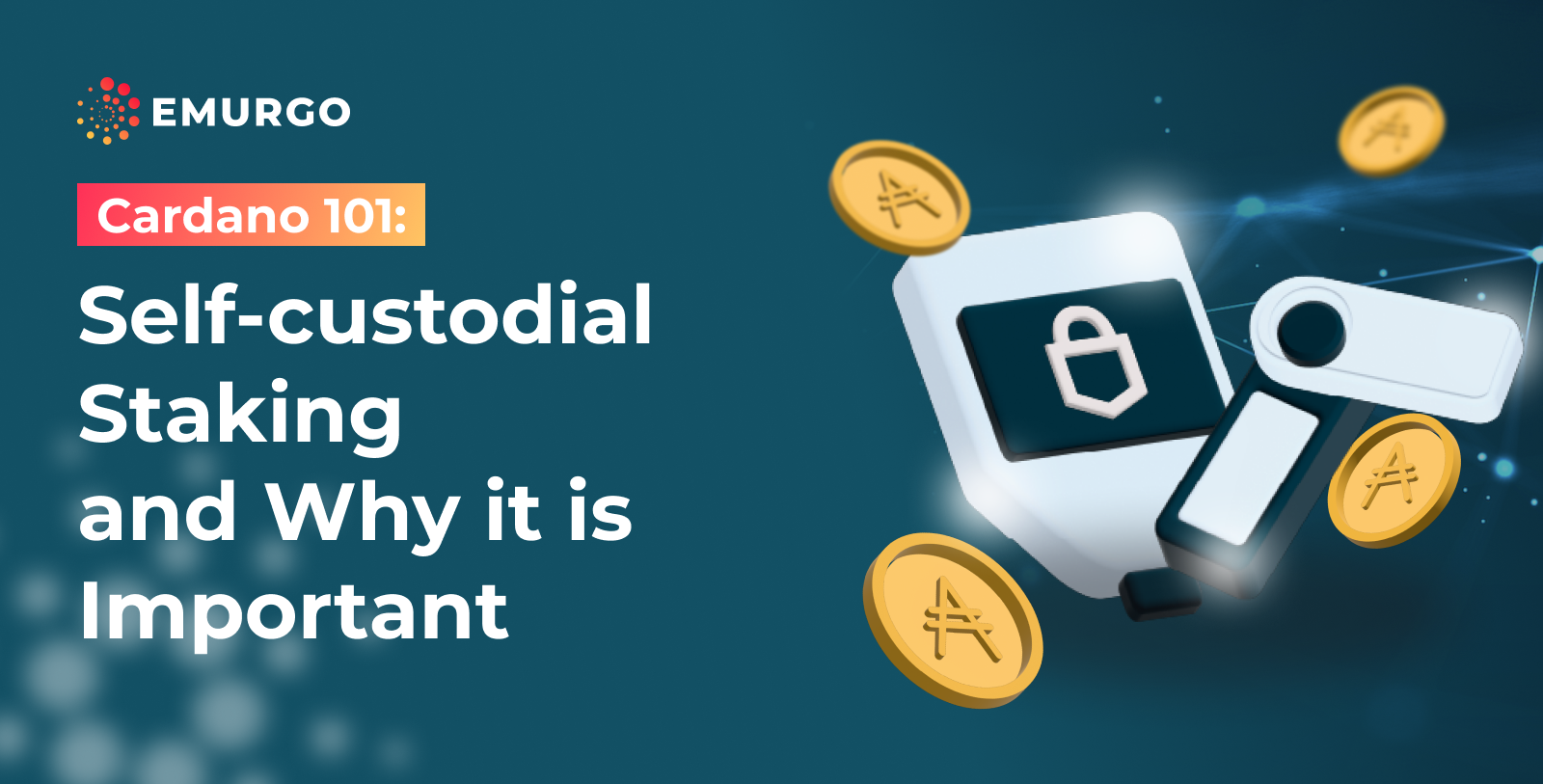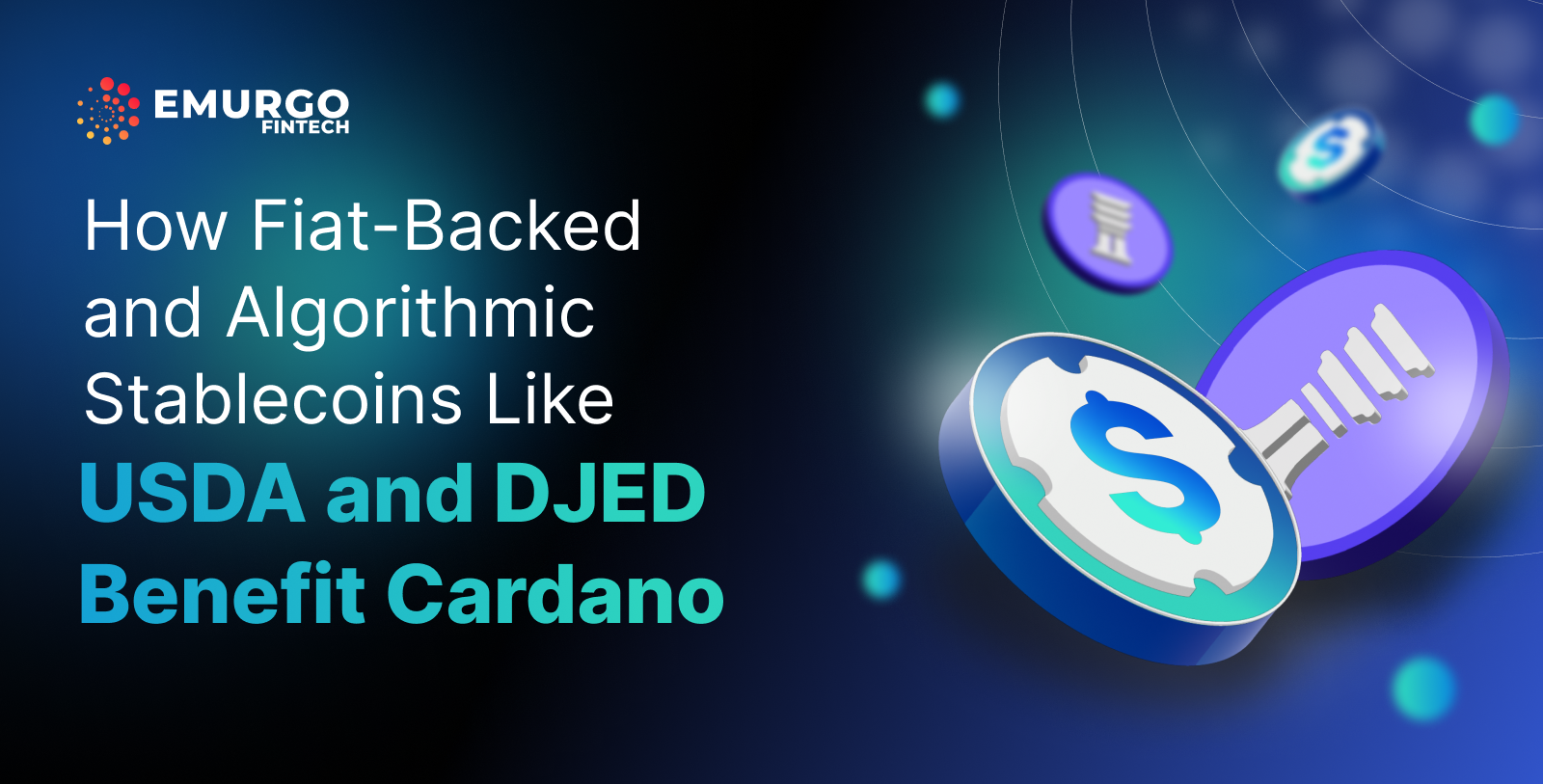Introduction
In traditional banking systems, our personal bank accounts are kept up-to-date through a centralized system of accounts.
This means that when you send or receive money for bills or your salary, the banking system keeps track of this through a centralized ledger of debits and credits.
The bank records money that leaves one account, enters another, and records the balance.
This is an account-based model.
Cardano – the first third-generation blockchain to evolve out of a scientific & peer-reviewed philosophy – uses a different type of system for keeping track of peoples’ funds and transactions known as the Unspent Transaction Output (UTXO) model.
This UTXO model was first applied to a blockchain at the dawn of first-generation Bitcoin and has been adopted by many blockchains since its inception.
Cardano uses an upgraded version of this model to keep track of who owns what and transactions that are made from peer-to-peer in a decentralized ecosystem.
In this blog, we explain the Cardano blockchain UTXO model is, and its advantageous role in the Cardano ecosystem.
Cardano blockchain UTXO model: A big apple tree
To understand the UTXO model, it’s helpful to think of a very big apple tree with many branches.
There are people all over the tree sitting on different branches, with different amounts of apples on each branch.
On this apple tree, there is a branch with ten apples hanging from it.
You are sitting on this branch of the tree because you own these ten apples.
Imagine now that you want to give four apples to a friend.
To give these four apples, two new branches start to grow at the very end of the branch you were sitting on.
One of these branches has six apples, and another branch has four apples.
Your friend then sits on the new branch with four apples and you sit on the branch with six apples.
The two new branches have a total of ten apples on them collectively, which is the same as the original branch you sat on.
New branches start to grow from your branches in the same way whenever a transaction is made.
From this example, we can see that the two branches were outputs of the original branch.
One of these outputs, the branch with four apples on it, represents an output that now belongs to someone else.
Because these have been sent to someone, they are spent outputs.
The second branch with six apples is your branch of unspent outputs, which grew from the original branch.
You are still able to give away these six apples, as these are the apples that are unspent outputs of your transaction to your friend.
In this way, there is a clear chain of ownership that builds like a tree over time.
The transactions that are unspent can be used for further transactions, and so on.
In this way, Cardano prevents double spending attacks.
It is impossible to give away “apples” (ADA) that you do not own, as you cannot transact with “apples” on a branch you no longer sit on.
Each branch is linked to a unique public address which everyone has visibility of through a Cardano blockchain explorer.
This public address is linked with your private keys, which allow you to send funds to others.
How UTXO works in daily life
With the integration of the Shelley hard fork, Cardano became fully decentralized.
Cardano ADA holders operating stake pools could now receive ADA as a reward for their work in validating blocks on the network.
From the moment that these stake pool operators receive their ADA, the Cardano blockchain records, stores, and communicates all previous transactions based on the UTXO model to everyone else in the Cardano network.
This means that the UTXO-based accounting system keeps track of payments and who owns what in a secure manner.
UTXO: A core pillar of Cardano blockchain’s accounting system
While understanding the model is non-intuitive at first, it is helpful to think of the metaphor above to get a better grasp of how UTXO works.
In this case, the thought of a tree with many branches growing from the previous branch is a helpful thought.
Through this UTXO method, it is very easy to keep track of ownership of funds.
While Bitcoin invented UTXO’s use in a blockchain setting, Cardano is building and evolving on this model by incorporating smart contracts into UTXO, while also offering scalability, sustainability, and interoperability with other legacy systems and blockchains.
This creates powerful, decentralized ways to securely model financial contracts and send money in an open and distributed blockchain like Cardano.
Follow EMURGO on our official channels for up-to-date information on Cardano
EMURGO is the official commercial arm and a founding entity of the Cardano blockchain.
Follow EMURGO on our official channels listed below for the latest updates, news, and announcements.
About EMURGO
- Official Homepage: dev.emurgo.io
- Twitter (Global): @EMURGO_io
- YouTube: EMURGO channel
- Discord: EMURGO Community
- Facebook: @EMURGO.io
- Instagram: @EMURGO_io
- LinkedIn: @EMURGO_io
About USDA
- Official Homepage: anzens.com
- Twitter: @AnzensOfficial
About Cardano Spot
- Official Homepage: cardanospot.io
- Twitter: @CardanoSpot
- Telegram: https://t.me/cardanospot
- Contact: cardanospot@dev.emurgo.io
About Yoroi Wallet
- Yoroi Twitter: @YoroiWallet
- Official Website: yoroi-wallet.com
About EMURGO Middle East & Africa
- Official Homepage: emurgo.africa
- Twitter: @EmurgoAfrica
- Telegram: https://t.me/emurgoafrica
About EMURGO Academy
- Official Homepage: education.dev.emurgo.io
- Twitter: @emurgo_in
- Facebook: @Emurgoacademy
- Instagram: @emurgoacademy
- LinkedIn: @emurgo-in
- Discord: EMURGO Academy Community
- Telegram: EMURGO Academy



